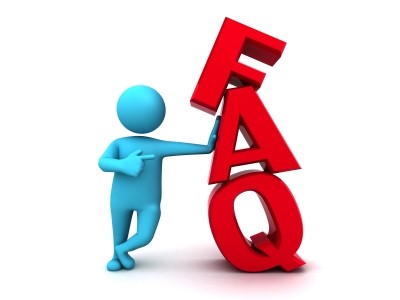Frequently Asked Questions
Post on: 19 Апрель, 2015 No Comment

Investment Methodology
ETF stands for Exchange Traded Fund. These are funds that trade on the stock exchange just like any stock. You follow the same procedure at your online broker to buy an ETF as you would any stock like IBM or GE. It should cost you between $4 and $10 per trade.
ETFs are not a secret, but investment professionals often don’t make fees from them, so they go ignored.
Each ETF is a basket of stocks that represent a particular index. For example if you wanted to own every stock in the S&P 500 Index, you would by one of several ETFs that follows that index — an example being SPY or Spiders. By owning one share of SPY, you gain diversification across 500 stocks.
With ETFs you can invest in practically any market you want. Some of the most popular indexes are the S&P 500 (tracks the largest U.S. public companies), the Russell 2000 (tracks some of the smallest U.S. public companies) and the Morgan Stanley Europe Asia Far East (EAFE) index composed of companies in developed foreign countries. ETFs also allow you to invest in real estate, bonds, commodities, sectors and other markets. There are currently over 800 ETFs now available and growing.
Mutual funds are 6 -10 times more expensive than ETFs because they hire pros who try to select a few stocks within the index that will beat it. But when you invest in an index fund, you basically get the exact returns of the index.
Since computers (not humans) manage the stocks in an ETF, the fees are very low. MarketRiders portfolios employ the best ETFs based upon low fees, high trade volume and low turnover (which reduce taxes).
Based upon your profile, MarketRiders does what a great investment adviser does, but without the 1% yearly fee on all your money. We automatically calculate the right allocations in stocks, bonds, real estate and other asset classes for you based upon your age, time horizon, risk tolerance and investment experience. Read more about this in our Methodology section.
The recommended ETFs for MarketRiders portfolios have very low expense ratios and turnover. The average expense ratio is 0.17 percent per year. In addition, and as important, they are chosen based upon how well they index a particular asset class. For example, for various reasons, we use an ETF that reflects the S&P 600 Small Cap index over the Russell 2000 for indexing small US companies. Read more about this in our Methodology section.
The simple answer is it depends. Rebalancing is a function of how you choose to set your alert function and how volatile the market is. We set our defaults so that in a typical market you’ll be alerted 2-4 times yearly. In addition, if you tell us that you want to add or withdraw from your portfolio, MarketRiders will send you a list of how many shares of each ETF to buy or sell so your portfolio will be rebalanced. Our software constantly monitors your portfolio and triggers an alert when the percentage of an ETF, asset class, or whole portfolio is out of balance— not based upon a scheduled interval of time.
No. MarketRiders embodies a buy and hold and rebalance strategy that enables one to hold to their asset allocation over time. The recommended allocations are a direct result of a client’s investment profile, not a function of how the market is currently performing. Our system does not attempt to time the market yet recommends rebalancing to keep to your target asset allocation. Read more about this in our Methodology section.
About the MarketRiders Service
You do. Pick any online discount broker that you wish and open up an account for your portfolio. We’ll tell you the ETFs to buy and the number of shares. Once you’ve bought those ETFs at your online broker, input your trades into our system, we’ll track the portfolio for you and send you alerts if you need to make a change.
In 1990, millions of people thought they needed a CPA to do their taxes. Today, they use TurboTax. Today, most investors think they need help investing, but MarketRiders is like TurboTax for investors. It replaces the need for expensive help.
If you take control of the process yourself then over time the stress goes away, you’re in control, and you find it doesn’t require any genius or training. In 10 minutes and 3 steps, we will show you how to replace your stocks, mutual funds and your financial adviser.
That’s the beauty of MarketRiders — it takes as little as one hour to get your portfolio built and purchased at your online broker and another one or two hours a year to keep it rebalanced. If that seems like too much time, we offer a new service built on the MarketRiders investment platform called Rebalance IRA where we will manage your account for you. Rebalance IRA is a personalized service with exceptionally low fees. Send an email to [Enable JavaScript to see email address] if you would like more information.
We email a monthly statement for each portfolio and send rebalancing alerts whenever an alert is triggered. If you do not rebalance your portfolio, you will continue getting that alert every 7 days. MarketRiders has a sophisticated report function where you can look at your portfolio’s performance in a variety of ways.
Yes, you can easily enter, track and rebalance your existing ETF portfolio. Once you enter your ETFs we’ll show you the implicit asset allocation with your current portfolio. If you adjust your allocations, we’ll send you the trades you need to make.

Yes, you can build one portfolio and fund it from both taxable and non-taxable accounts or you can build mirror portfolios for each account- IRA and non-IRA. Oftentimes members will build one portfolio, allocate it proportionally to each account and then rebalance from within the larger non-taxable account.
Every employer provides its employees with a specific and limited number of investment choices in a 401K plan. If your company’s plan allows you to manage your own 401K through a brokerage account and buy ETF in that account, then you can use our system. Check with your company to understand your plan’s guidelines.
We want you to understand investment fees and learn how to keep them low. If your account is under $25,000, we recommend that you use Schwab, Fidelity or Vanguard where you can build and manage an ETF portfolio without commissions. We offer portfolios specifically designed for these online brokers so that you can save on commissions when you buy and rebalance your portfolio.
MarketRiders charges users either a monthly subscription fee of $14.95 or a yearly fee of $149.95 to use our service. While this is the only fee that we collect, we wanted to provide additional transparency about how much it will cost you to purchase, own, and rebalance a portfolio on an annual basis. There are two main types of fees associated with buying and owning ETFs and index funds:
- ETF and index fund fees
A typical MarketRiders portfolio, built with low cost ETFs, averages fund fees of 0.17% versus on average 1.5% for a mutual fund. These fees are collected by the managers of the ETFs and index funds, not MarketRiders. These fees are baked into the prices of the funds, so you’ll pay them automatically as long as you own the fund. Trading commissions
Each time you buy or sell an ETF, your online broker will charge you a trading commission. Most online brokerage fees are about $10 per trade. Certain online brokers like Schwab, Fidelity, and Vanguard offer commission-free trading on certain ETFs and we offer the ability to optimize your portfolio for these ETFs.
Total costs including MarketRiders and 3rd party fees














